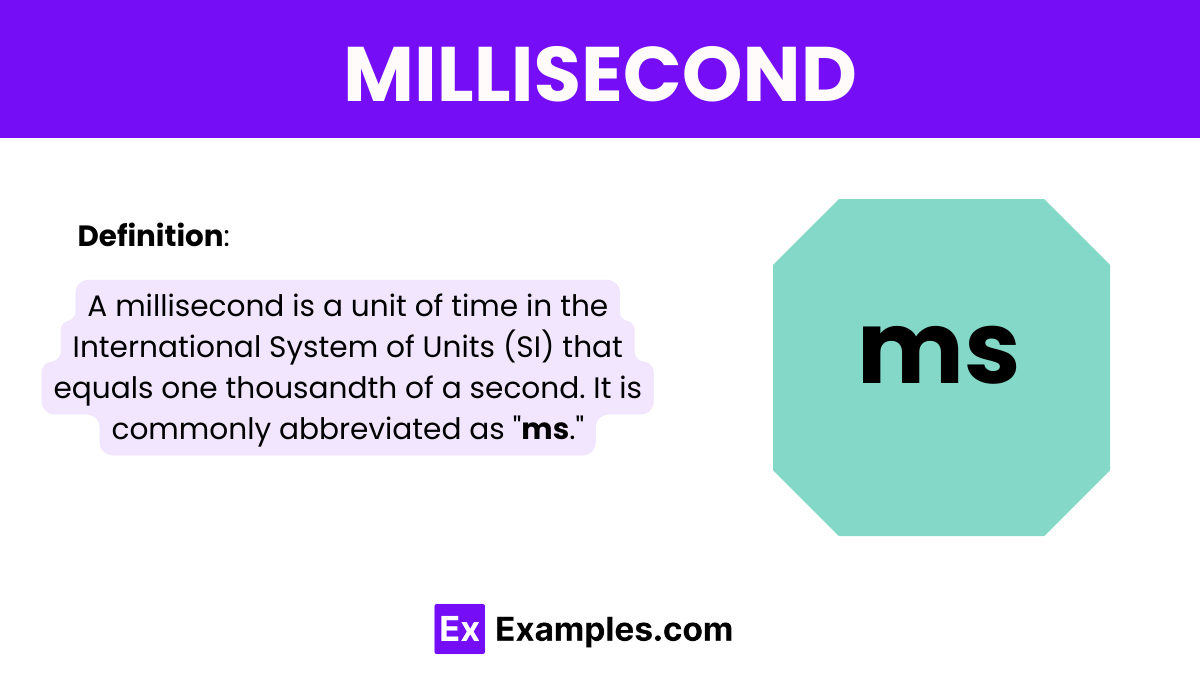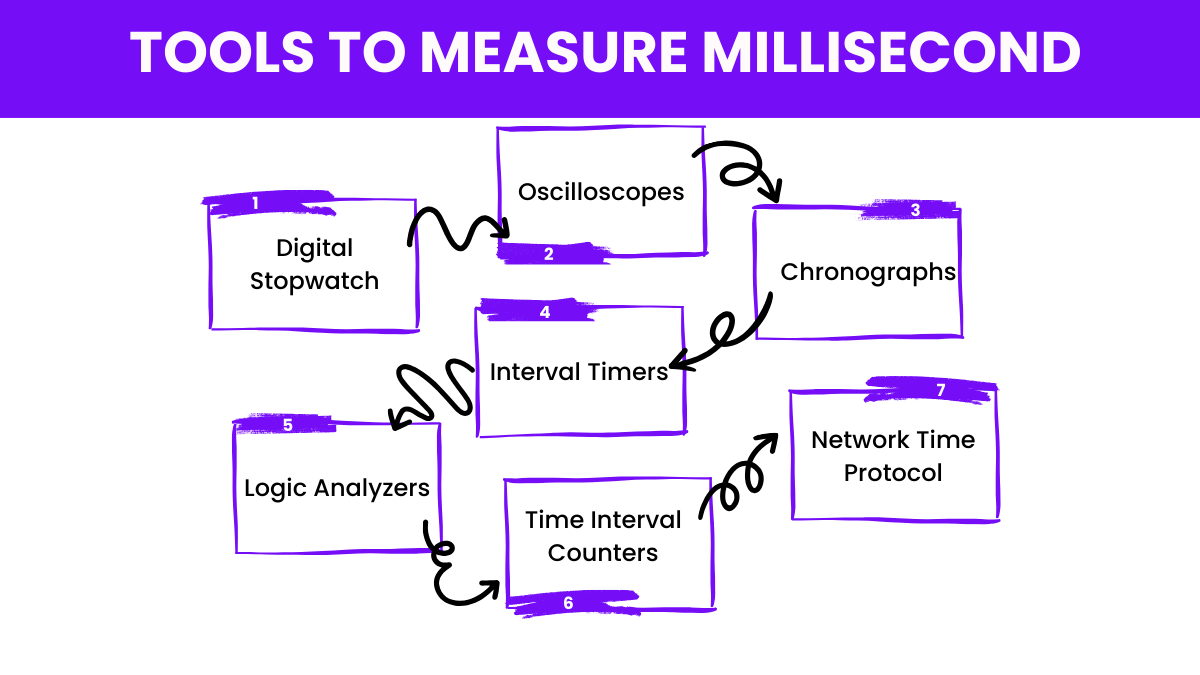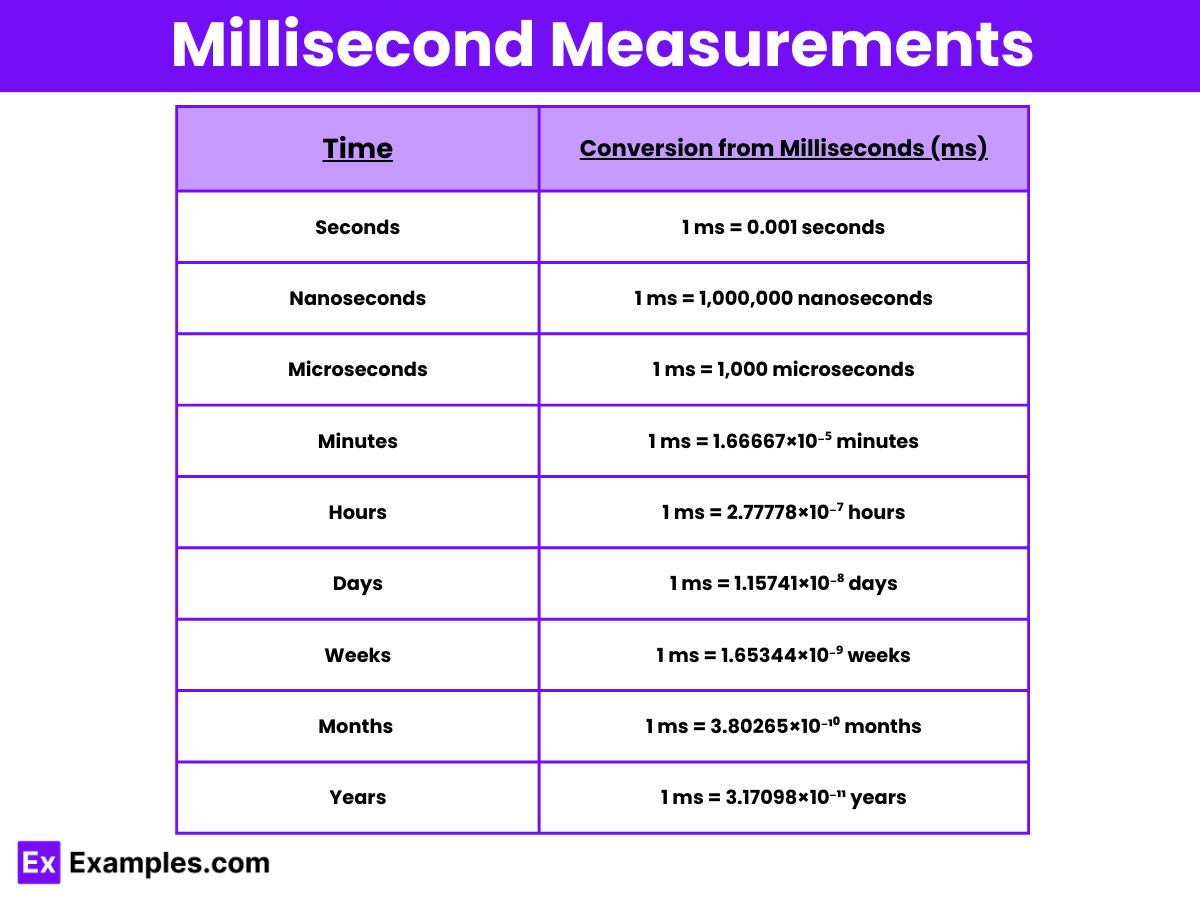How many milliseconds are there in 1 second?
10
100
1000
10000


A millisecond is a unit of time in the International System of Units (SI) that equals one thousandth of a second. It is commonly abbreviated as “ms“. Milliseconds are used to measure time events that require precision but do not need the extremely short measurements like microseconds or nanoseconds. This unit is particularly relevant in measuring the speed of sound, the timing of electronic components, response times in various scientific tests, and intervals in sporting events.
This unit of time is crucial for applications that demand timing accuracy beyond the capability of seconds but not as finely tuned as microseconds or nanoseconds. Milliseconds are vital for evaluating the performance of fast electrical circuits, the latency in network communications, and the precision timing in various sports and scientific experiments. This brief duration is essential in everyday technology, from the refresh rates on computer screens to the timing of sound and light events in performance technologies.

Here are some tools commonly used to measure milliseconds:

Here’s a table showing the conversion of milliseconds to other common units of time:
| Time Unit | Conversion from Milliseconds (ms) |
|---|---|
| Seconds | 1 ms = 0.001 seconds |
| Microseconds | 1 ms = 1,000 microseconds |
| Nanoseconds | 1 ms = 1,000,000 nanoseconds |
| Minutes | 1 ms = 1.66667×10⁻⁵ minutes |
| Hours | 1 ms = 2.77778×10⁻⁷ hours |
| Days | 1 ms = 1.15741×10⁻⁸ days |
| Weeks | 1 ms = 1.65344×10⁻⁹ weeks |
| Months (average) | 1 ms = 3.80265×10⁻¹⁰ months |
| Years | 1 ms = 3.17098×10⁻¹¹ years |
Understanding how to convert milliseconds to other units of time is crucial when working with various measurement systems, especially in fields like computing, science, and engineering where precise timing is essential. Here’s a straightforward guide to converting milliseconds to and from other common units of time:

One millimeter (1 mm) represents one thousandth of a meter. It is a unit of length in the metric system, commonly used to measure small distances and objects.
One millimeter is equivalent to 0.001 meters, or one-thousandth of a meter. It is a unit of length in the metric system, commonly used to measure small distances.
5mm means five millimeters, which is a unit of length in the metric system. It represents a small distance, roughly the thickness of a stack of five standard credit cards.
Text prompt
Add Tone
10 Examples of Public speaking
20 Examples of Gas lighting
How many milliseconds are there in 1 second?
10
100
1000
10000
Convert 5 seconds to milliseconds.
500
5000
50000
500000
If an event takes 250 milliseconds, how many seconds is that?
0.025
0.25
2.5
25
How many milliseconds are in 1 minute?
60000
6000
600
60
Convert 2.5 seconds to milliseconds.
1500
2000
2500
3000
If a process takes 7500 milliseconds, how many seconds is it?
7.5
75
0.75
750
How many milliseconds are in half a second?
500
250
750
1000
Convert 120 milliseconds to seconds.
0.012
0.12
1.2
12
How many milliseconds are in 3 minutes?
180000
18000
1800
180
If an animation lasts for 150 milliseconds, how many seconds is it?
0.015
0.15
1.5
15
Before you leave, take our quick quiz to enhance your learning!

